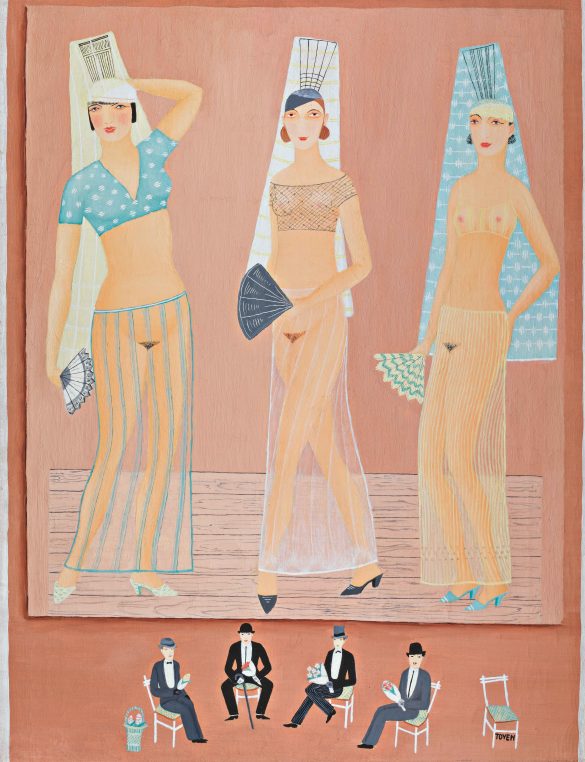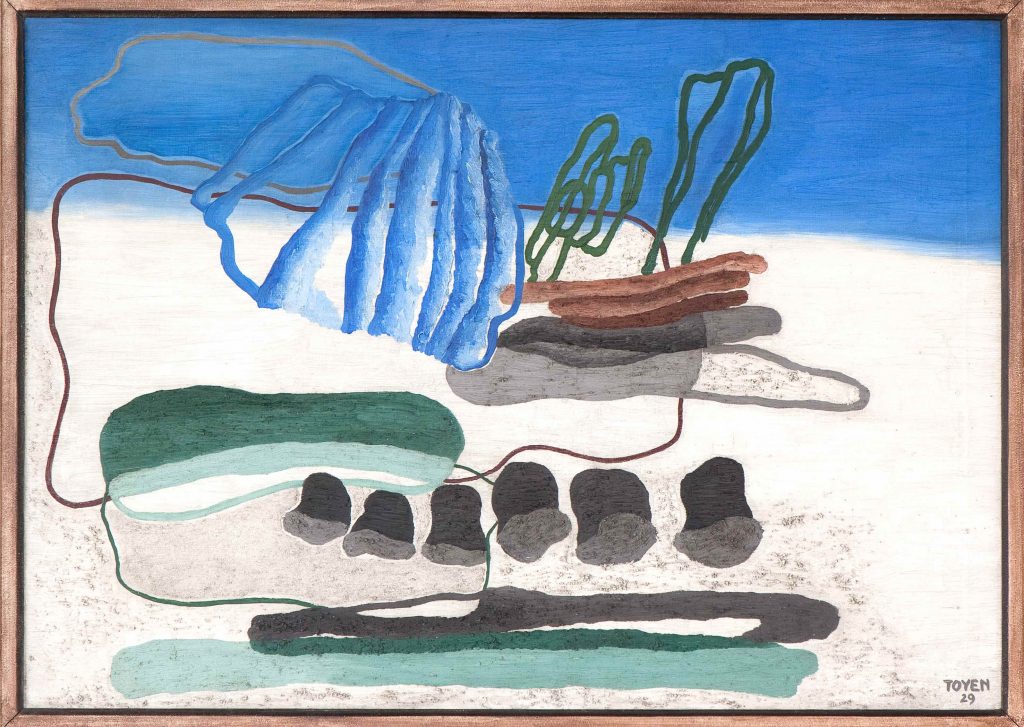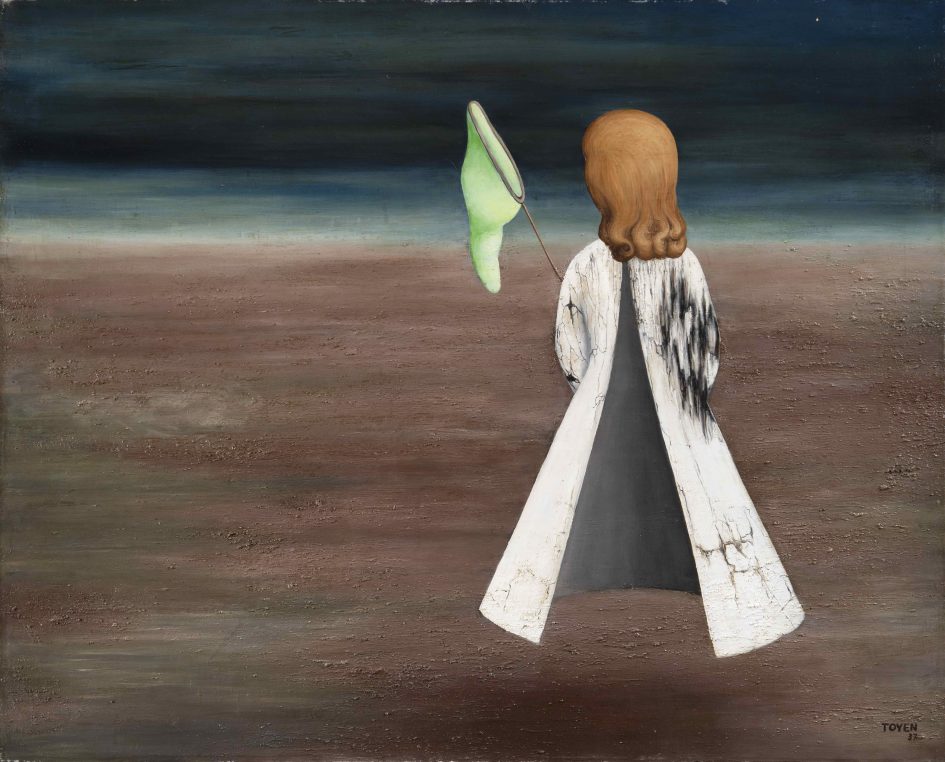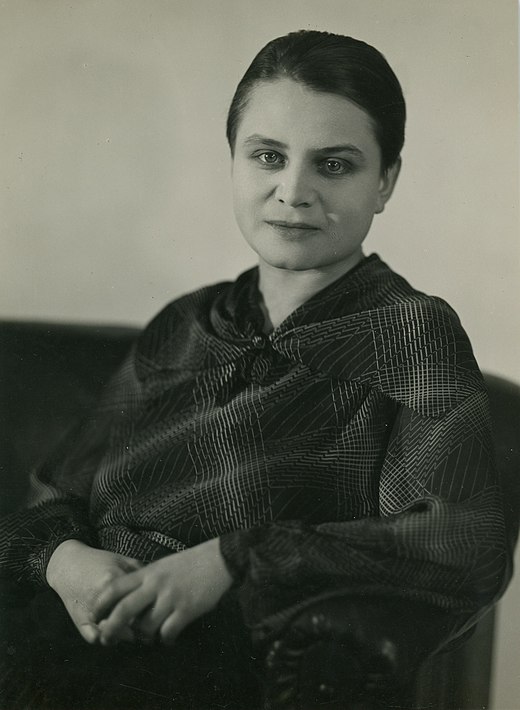Toyen was born Marie Čermínová in Prague in 1902. And she died in Paris in 1980 where she had lived for thirty two years in relative poverty but surrounded by very close friends. One of them, French writer Annie Le Brun, met her through André Breton in the 1950’s and co-curated the show of 150 paintings and drawings at Musée d’Art Moderne, Paris, after they were shown in Prague and in Hamburg. She always refused to be called a painter and even more a woman painter. She chose this name without a genre, supposedly short for citoyen (citizen).
Toyen was obviously a singular woman. She left her parents at 16 and joined the anarchist and communist circles in Prague, always eager to be at the avant garde of all movements. She cherished her freedom all her life and had a very free sexual life with men and women. In 1922 she meets a painter Jindrich Styrsky, whom she joins in artistic circles and they found the Czech Surrealist group in 1934. After his father dies, he inherits a little money and they travel in Europe and exhibit their works in Paris. There Toyen draws erotic paintings inspired by brothels in Montmartre and -falsely- naïve ones, and uses the musical shows she sees at night with Joséphine Baker and other cabaret scenes, to paint dancers. She meets Paul Eluard who will visit her in 1935 in Prague, he fell madly in love with her. She also befriends the surrealist poet André Breton who remained a close friend all their life, in particular after the war when they lived in Saint-Cirq-Lapopie together…
In the early 1930’s, a new violence took hold of her, revealing forms which imposed themselves through their sexual power. She discovered the writings of Sade and contributes to the Erotická review with Styrsky. She travels in Italy and in France. Later she did premonitory series of drawings, “The Spectres of the desert”, 1936-1937, on death and the war. She went on with “War, Hide away” and “Shooting”. These drawings are one of the strong moments of the show. During the war, she was hiding a Jew Jindrīch Heisler in Prague, whom she wrote poetry with. In 1942, Styrsky died of pneumonia and they left Prague and the new totalitarian regime in 1947 after Breton organized an exhibit for her at Galerie Denise René in Paris.
Very soon in 1953, Heisler, who was much younger, died abruptly at 39. He is buried in Lacoste, Lubéron, where the Marquis de Sade’s castle was built. A pretty little painting from 1943, with a fox killing a pigeon celebrates Château La Coste in the show. She was obviously a familiar visitor there. She then starts a period of painting fishes under the sea: the sea has always been a huge attraction to her and in the wonderful film “The subversive baroness of Surrealism” by Andrea Sedlackova, which can be seen on ARTE.tv, one of her friends describes her leaving the beach for hours to swim at sea and returning as discreetly as she had left. We also meet some of her collectors, like Jean Claude Binoche who discovered her paintings in 1982, after she died and when auctioneer Vincent Wapler sold her collection. Bernard Galateau and Joyce Mansour were also keen collectors.
In 1945 she stops speaking to Eluard who wanted her to join the communist party. She always kept her freedom and favored surrealism above all. In Paris, she finds many friendships among the surrealists including poet and writer Annie Le Brun who is a co-curator of the show, but lives in complete solitude. She takes part to Eros, the International exhibition of Surrealism in Paris in 1959 and illustrates Breton’s book “Surrealism and painting” in 1965. In 1974, a monography is published on her at Editions Filipacchi. She dies in 1980 and is buried at Cimetière des Batignolles. One of the most striking paintings of the show, with butterflies and a panther with green gloves, 1966, features “Le Paravent” the screen belongs to MAM Paris.
This is an important exhibition and when you visit it you will meet all sorts of passionate admirers of Toyen. Until July 24, at MAM Paris.
x_share title=”Share this Post” facebook=”true” twitter=”true” linkedin=”true” pinterest=”true” reddit=”true” email=”true”]






